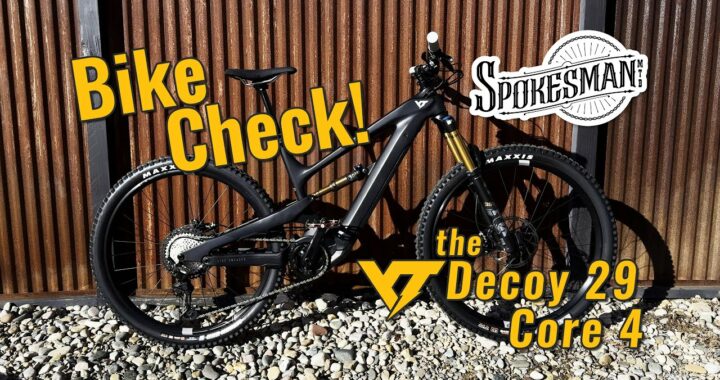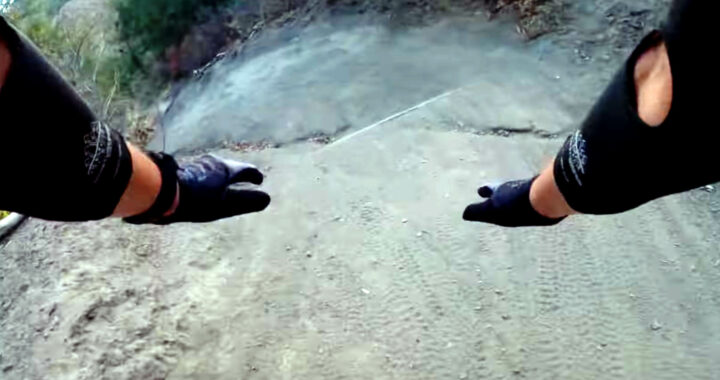Back Story
I have been riding for over 40 years. I have been riding “seriously” (for transportation, racing, or generally not just fucking around) for over 30 years. In that time, I have enjoyed watching and living the evolution that bicycling has followed over the decades. When I started riding, there were no suspension forks. ALL brakes were calipers. Pedals were flat, frames were steel, and there were never more than 12 speeds. There were no mountain bikes.
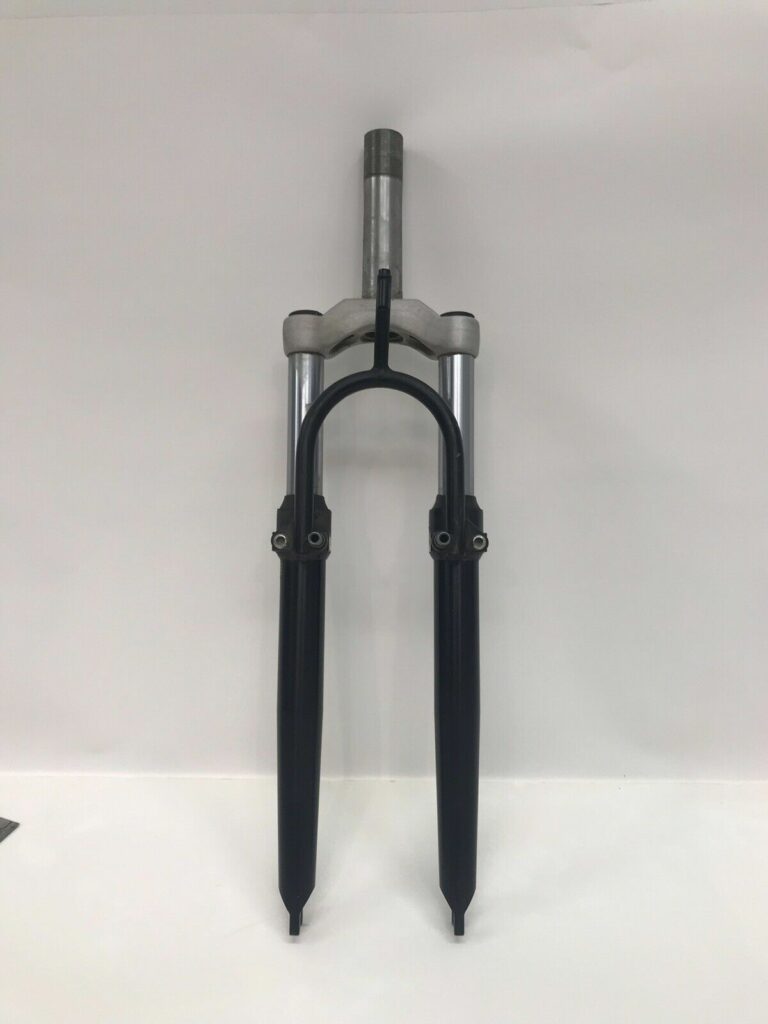
In the 80’s, crazy dirtsmiths in Marin County started converting old cruiser bikes into frankensteined downhill rigs and riding them on the powdery footpath trails of Mount Tamalpais in Marin County, California. Joe Breeze, Gary Fisher, Charlie Kelly, and even Tom Ritchey built and rode their inventions until they would break, then they would fix them and do it again. Those monstrosities were, in essence, modified road bikes with heavier tires. They had all the old tech that had made road bikes run well for many years, and they were not very ruggedized. Stuff broke. A lot.
As the years flew by, new additions were developed which pushed mountain biking forward by leaps and bounds and helped the sport acquire its own identity and legitimacy. Rockshox released their first suspension fork in 1990 and Greg Herbold used it to win the world championship that year. Threadless steer tubes, cantilever brakes, V-brakes, 18-speed drivetrains, chain-slap preventers, indexed shifting, quick-release seatposts, the list goes on. Building mountain bikes was becoming more fun, a lot safer, more efficient, and also a lot more expensive.
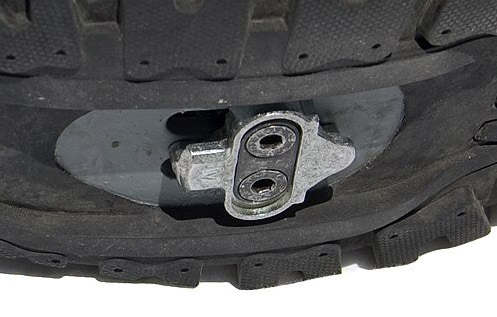
The most prolific change (in my opinion) in mountain biking engineering happened when Shimano developed the SPD clipless pedal system in 1990. Clipless pedals had been around for several years but were more prominent on road bikes. It wasn’t until Shimano released the SPD design that clipless took on a life of their own in the sport of mountain biking. With the ability to clip in and out of the pedal directly, with a sole-mounted cleat and without using a leather strap to hold your foot on the pedal, it was possible to attach your foot on the pedal instantly and directly. This gave the rider more power in the pedal-stroke without cutting off the circulation to their toes and without being tied to the bike if one should crash (clipless pedals are like ski bindings, they pop out when you fall).
A Major Transition
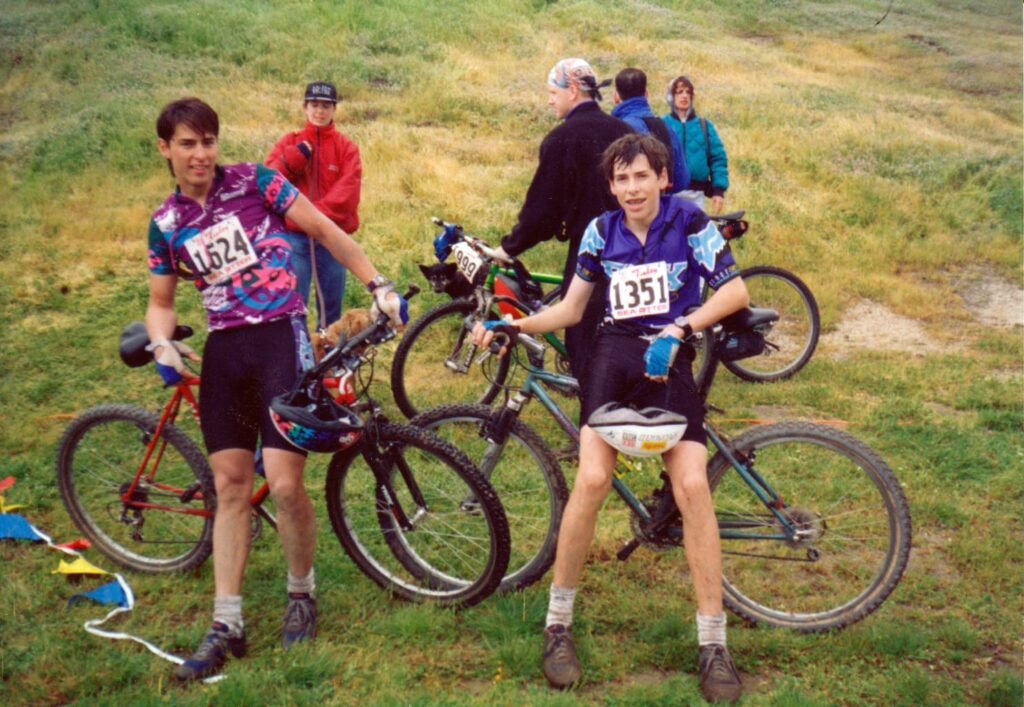
I was working at a bike shop in the early 90’s and I purchased a pair of cheap third-party clipless pedals with some of the meager cash I had saved over several weeks. They went on the bike immediately and I started getting used to them. I used them to race in my first ever event; the 1994 Sea Otter Classic. They broke about 10 miles in and I finished the race with a disabled bike, but I finished. Those pedals had made a huge contribution (when they were working). I climbed faster, I had more control on the descents, and I had more overall confidence.
I was hooked.
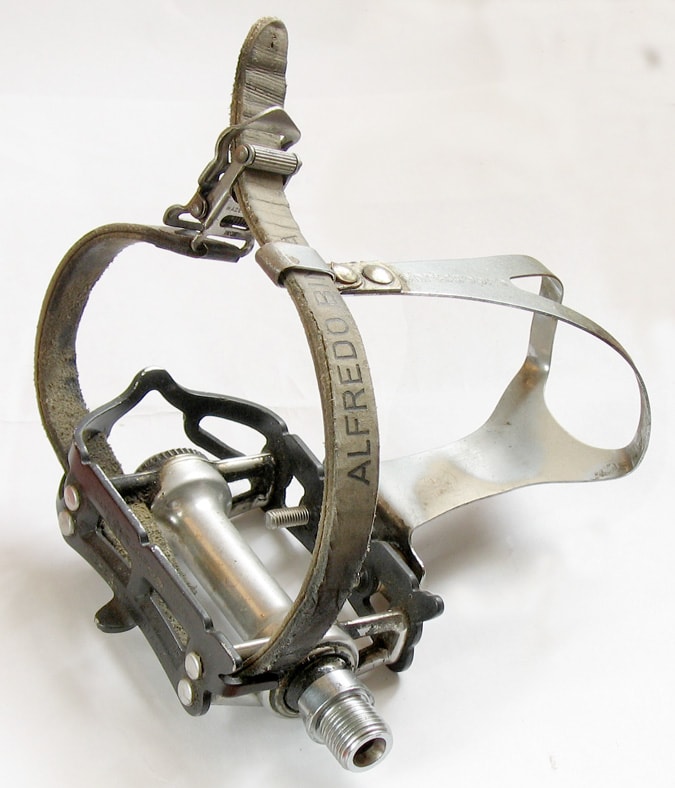
The enormous difference that clipless pedals made cannot be understated. Until I tried them, I was literally bound to the old style of toe clips. They were bulky, they caught on everything, and they hurt. You had to reach down and pull on a strap to tighten them. If you crashed, well, no one wants to be tied to a bike as it slides along the pavement at 40mph.
With these new devices, I could effortlessly just “plop” my feet into the pedals and take off to do whatever my heart desired. It was easier to climb, rocky trails were safer, and I never again had to worry about my foot disengaging from the pedal when I was traveling at top speed. Aside from the cost, and the inevitable fall-overs that are part of learning to clip in at red lights, there was no downside to these things.
I rode on them for decades. I used the original (far more reliable) Shimano SPD design for over ten years, loving its double-sided clip design which allowed me to clip in easily no matter what side of the pedal was facing up. I switched to some models later on that had more “float” (side to side motion for knee and ankle mobility). I seem to remember Onza being in there for a while. I eventually landed on the CrankBrothers Egg Beater style. These were compact, but were easy to use and allowed entry on 4 sides instead of two! I am on my third pair on my latest build and I’m still loving them.
Mountain Biking has undergone a “third wave” of innovation in recent years that has raised the bar not just on design and engineering, but also performance. (Dropper posts, am I right???) New designs in dual-suspension tech, frame materials, geometry designs, and aggressive invention have yielded bikes that are light, supple, and ultra-responsive. We are now living in a world of mountain bikes that are, essentially, motorless motorcycles.
One thing I have noticed on these newer bikes is that many riders are using platform pedals and non-clipping shoes. I have been watching these guys (and girls) hammer up and down the mountains on these pedals and I’ve been stupified by their desire to have free-roaming feet. Why do they choose to sacrifice efficiency and a steadfast foot position in favor of a pedal that could flip up and rip their shin into pulled pork?
People seem to love them, and since I am going to ride in South Carolina in a few weeks with a bunch of guys who are invariably going to be riding platforms, I thought I’d grab a cheap pair and give them a whirl.
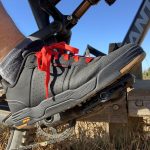
I have been on two rides with them so far, and they are remarkably easy to use and very grippy! My shoes (I had to buy non-clipless shoes for the first time in forever) seem to just “stick” to them. I attribute this to the exceptionally gummy shoe sole, and also the exceptionally sharp traction pins on the pedals. The two appear to work well together and they hold my feet with a remarkable amount of security.
Climbing would be at the top of the list of concerns for me. It was not nearly as much of an issue as I had thought it would be. On my fist ride, I climbed about 900 feet. The pedals held fast and I really only lifted my foot on the upstroke once. Even then, it landed right back on the pedal when I realized what had happened.

The energy output was similar to clipless. I suppose I don’t “pull” on the upstroke as much as I had thought. I made it to the top of the climb with the same degree of overheating and oxygen debt that I am accustomed to. I didn’t need different gears or technique either. It was pretty straightforward.
My second ride on platforms was very different. While I experienced few issues climbing (just like the first ride), the dynamics of attacking the tech and steeps required a different approach.
I was riding with my friend Johnny on his first mountain bike ride in several years (like over 20). He regularly trains on a Peleton, so he has pretty good cardio. In fact, he was destroying me on the climbs, but that’s not too difficult to do.
When we reached the top, we rolled over a bunch of undulations and fun berms. We were having a great time cruising around the top of the trail system until I turned around and saw that Johnny had vanished! I went back to the previous junction and couldn’t find him. I felt that he could only have rode down into a section of expert runs that are frought with crazy drop-offs, jumps, and treacherous tech. I could do that stuff, but it’s not my specialty.
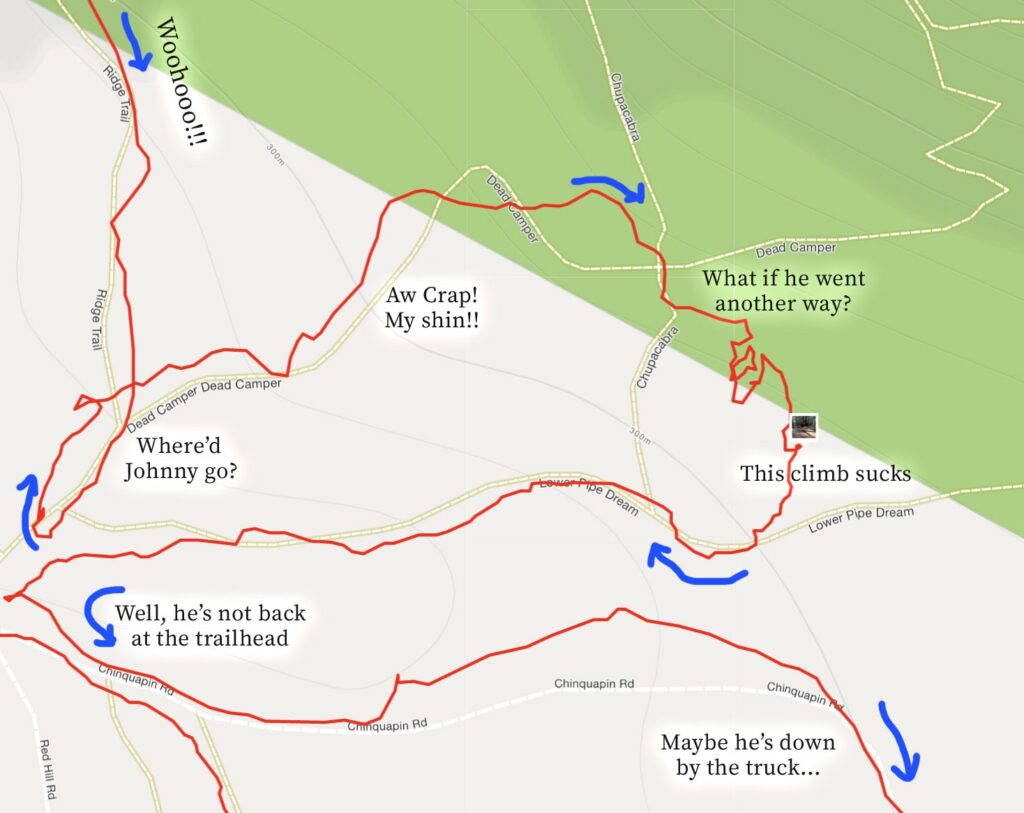
I went down to (hopefully) follow him when I hit an especially steep drop-in. I dropped my post, leaned back on the bike, and positioned my feet for the descent when my right foot flew off the pedal. I guess I normally use my clipped-in position to set up my pedals before a drop, and this time that didn’t really come off as planned.
My pedal swung up and gashed my shin. Like a cheese grater. Blood was dripping and I was wincing just moments after those grippy metal spikes dug into the meat of my leg. It sucked completely. I ignored the pain and pressed on until I was convinced that if I went any further, I wouldn’t be able to find him in case he had not gone down this trail. I turned around and pushed back to the top of the trail.
It turns out he did go to the bottom and he messaged me an hour later to let me know he was waiting at the 4Runner for me to arrive. The shower that afternoon was bloody.
We had a great time, but I’m returning to clipless for today’s ride. I’m not too sure how I’ll attack my North Carolina trip; perhaps it is a clipless trip, perhaps not. We shall see…
